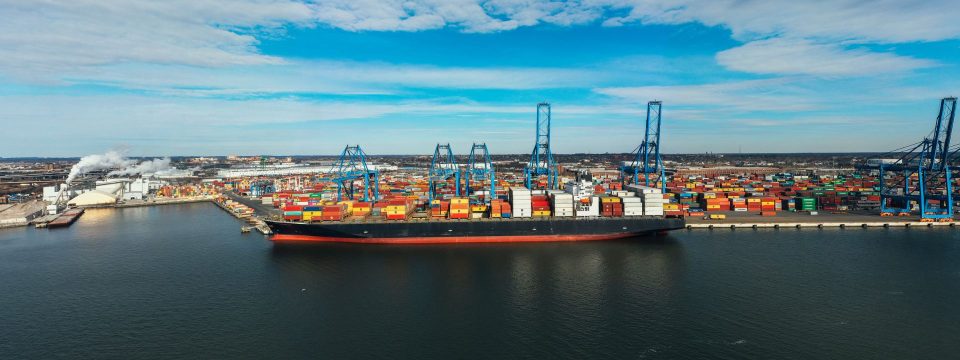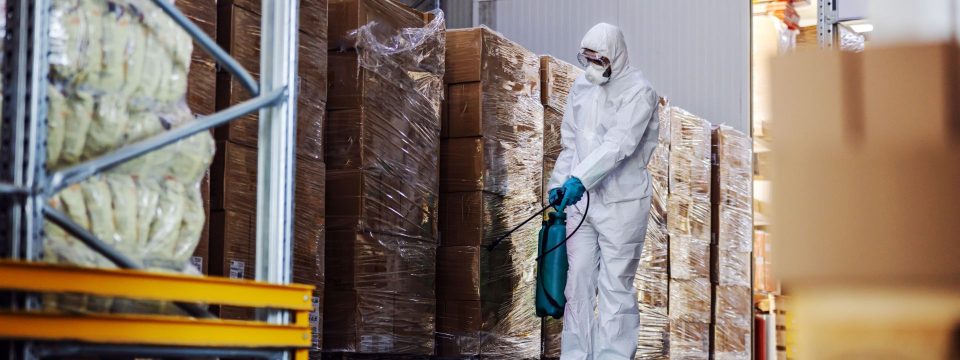Importing Food Into Australia: The Process Explained
October 28, 2022 Beginners Guides

Importing food products into Australia can be complicated. The Federal Government has a strict biosecurity system administered by the Department of Agriculture, Water and the Environment (The Department). Conditions for importing goods can be checked on the Department’s website known as the Australian Biosecurity Import Conditions (BICON). BICON is a primary tool for checking goods.
If you’re looking to import any food products in Australia, this is the right article to read. Below, we’ll provide the ultimate guide for food importers by looking at permits, the required documentation, the BICON database and everything you need to know before arranging your shipment.
The code for food standards
The applicable standards for food under the Imported Food Control Act 1992 are outlined in the Australia New Zealand Food Standards Code. All food products imported from overseas are required to meet the Code’s specifications. If you are a food importer, it is your responsibility to ensure that the food and labelling are compliant with the requirements.
This four-chapter Code deals with food standards, safety standards and primary production standards. You will get all the information you need with regards to labelling, goods requiring pre-market clearance, substances contained in food, contaminants and more.
Each particular food has very detailed requirements – for example, under the requirements for cereal and cereal products, you’ll see that no less than 2 mg/kg, and no more than 3 mg/kg, of folic acid, can be placed in wheat flour that is sold as suitable for making specific types of bread relevant for cereal and cereal products.
In our experience, labelling is a critical part of your food import. We discuss more about labelling below.
What is BICON?
The Department of Agriculture, Water and the Environment administers the BICON database, containing over 20,000 plants, animals and minerals. The Department’s primary goal is to protect Australia’s environment from unwanted pests and diseases by determining whether your goods require an import permit or are subject to any restrictions.
The BICON system will help you understand if any import conditions exist for any particular food product. You will be able to search using the name of the product, its scientific name as well as its tariff code.
You will find that some products are simply not allowed into Australia and some must meet certain conditions to reduce the risk to Australian biosecurity. BICON can help you determine whether a food product import;
- is allowed;
- has import conditions;
- requires any specific supporting documentation;
- requires treatment (such as fumigation or heat treatment); or
- needs an import permit.
The importation of food into the country is closely monitored and regulated by the Imported Food Control Act 1992.
Importers should also be aware that the BICON database is regularly updated so it is worth routinely checking import conditions required for your products in case of any changes.
What is the Imported Food Inspection Scheme?
The Imported Food Inspection Scheme (IFIS) is a government-run border inspection program providing powers for the inspection and control of imported food.
Officers from the Department of Agriculture, Water and the Environment are given powers to inspect all imported foods to verify if they meet Australian health and safety requirements and are consistent with national food standards.
Shipments of food may be directed for inspection by the Department, where officers will visually check your goods and labelling. They may also take a sample of the food for further analysis. At the discretion of the officer, further information about the product, its manufacturer and end-use, may be requested.
Different tests will apply for risks foods and surveillance foods. Risk foods are those foods considered to pose a medium to high risk to public health. Surveillance foods are all other foods, considered to pose a low risk. They are inspected at a lower rate, but such a rate will increase if they fail inspection. You can see a detailed outline of the relevant tests for risk food and surveillance food on the Department’s website.
You may also be able to enter into what is called a Food Import Compliance Agreement with the Department. This essentially provides for an alternative to inspection and will likely require a comprehensive audit of your food safety systems by officers of the Department. You can read more about these Agreements and apply for one on the Department’s website.
What documentation do I require for a food import?
Food imports will normally require additional documents compared to regular commodities.
You will, of course, need all the documentation applicable to any import. This includes the commercial invoice, packing list and packing declaration. See our blog on the five shipping documents you will need for importing goods from overseas or download the checklist below.
In addition to those documents, food also requires a combination of any of the following documents as directed by BICON:
- Import Permits
- Health Certificates
- Phytosanitary Certificates
- Treatment Certificates
- Manufacturers Declarations
- Import Declarations
- Lot Code Listings
We discuss each of these documents below.
Import Permit
If you are a regular food importer, you probably already have existing permits in place, including all documents and all the statements you need to import your goods.
Otherwise, it’s important for you to know whether your food requires an import permit or you may risk penalties. The Biosecurity Act 2015 currently imposes restrictions on many foods and ingredients, including:
- eggs and egg products;
- fresh fruit and vegetables;
- seeds and nuts;
- dairy products; and
- uncanned meat.
If you seek to import these goods, you’ll most likely need an import permit. Permits are normally valid for two years so ensure that yours is kept up-to-date.
Furthermore, if your goods have more than 10% egg or dairy or contain fresh or unprocessed ingredients, an import permit will be required.
If your goods arrive into the country without an import permit and you require one, the Department will direct the goods for export or destruction at the time of arrival. You cannot apply for permits retrospectively.
If your goods do require an import permit, you can manage the permits using BICON’s online system.
Health Certificate
Health Certificates contain the details of the health and origin of animal-based products and ingredients. A health certificate is a government-issued document and the information that is required in the health certificate will be outlined in your import permit.
Phytosanitary Certificate
Phytosanitary certificates are issued to show mainly that certain plants meet specific phytosanitary import requirements. The document will show if the plants were inspected, treated (if required) and declared free from pests.
Phytosanitary certification is a government-issued document undertaken by a National Plant Protection Organisation (NPPO), which are organisations in countries that have signed the International Plant Protection Convention (IPPC) and administered by the United Nations Food and Agriculture Organisation (FAO). You can find a list of NPPOs per country on the FAO website.
Samples of phytosanitary certificate on page 20
Treatment Certificate
Treatment Certificates certify that minimum standards are met to ensure biosecurity risk is reduced to the maximum possible extent.
For example, you may need a treatment certificate if you are carrying food in timber and wooden related products. Treatments such as irradiation, cold storage and fumigation can only be executed by offshore approved treatment providers (a list of which you can find here) or endorsed on a phytosanitary certificate.
If treatment is required on your products prior to import, you should consider whether any treatment will adversely affect your cargo prior to making these arrangements.
Heat treatment certificate sample for stink bugs
Manufacturer’s Declaration
A Manufacturer’s Declaration is prepared by the manufacturer of goods outlining information about the products they have made. You can read more about this document on our Manufacturer’s Declaration blog.
You will need a Manufacturer’s Declaration because the Department use it to identify the ingredients and processing, and to assess whether goods can be released or held for inspection or testing. The declaration must include an ingredient listing, highlighting the percentage of each ingredient used. It also must contain the details of the company representative who signed the declaration, including the name, position, title and signature.
The Declaration must contain any statements as required by the Import Permit and/or BICON and should state that the goods are commercially prepared and packaged, if applicable.
If, for example, the goods are canned and retorted, the goods should include details of the preservation process and a statement that the goods are canned and retorted.
If goods are for human consumption, it should include an end-use statement: goods are for human consumption.
The declaration cannot be dated more than six months prior to shipment.
Importer Declaration
An Importer Declaration is a statement by the importer as outlined in BICON, normally to verify the end-use of the product. The Declaration may also contain important information such as your details, how the goods are being shipped, as well as the tariff classification. BICON will advise for each product if an importer declaration is required or it may be requested by an assessing officer.
Lot Code Listing
Lot codes are batch numbers or “best before” dates. These are generally listed on the packing list or done as a separate lot code declaration.
A ‘lot’ refers to a quantity of food prepared from a particular packing or preparation unit during a certain period. Lots are identified by ‘codes’ generated by the manufacturer. These will be placed into a list of codes, called the ‘Lot Code List’.
Labelling your Food Import
Food labels must contain information as outlined by the Australia New Zealand Food Standards Code. These labelling requirements are enforced by all Australian states and territories and by the New Zealand Ministry for Primary Industries.
Federal laws including the Commerce (Trade Descriptions) Act 1905 (Cth) and the Commerce (Trade Descriptions) Regulation 2016 (Cth) establish which particular foods require labelling – or, ‘trade descriptions’ – when they are imported into the country, what label you need to use and where the label must be used. Clause 9, Item 1 of the Regulation specifies that “Food” is a good whose import without a trade description is prohibited.
The details required for a label include the following:
- An accurate description of the goods and details of processing;
- The labels must be prominent, and legible
- Labels must be in English
- The country of origin;
- The food product’s correct weight;
- The supplier and importer’s address and contact details;
- A detailed ingredient listing totalling to 100%;
- Information about the food products’ health and nutrition; and
- An Allergy Statement – this is very important as some food ingredients can cause allergic reactions such as anaphylaxis (which can lead to death)
Imported food inspections will include a check that the label meets the Code. Any error will result in the goods needing to be re-labelled. Furthermore, new penalties came into effect in June 2018 that apply to imports contravening the labelling requirements.
You can read more about requirements for labelling on the Australian Border Force’s website.
Case study: Imported food and allergies
In 2013, a 10-year-old boy in Melbourne passed away after suffering an anaphylactic reaction caused by drinking Green Time Natural Coconut Drink, a product that had been imported from Taiwan. The drink was recalled and samples were taken by the NSW Food Authority.
The results showed that the drink contained undeclared dairy products. The goods were recalled and the importers were fined $18,000 for mislabelling the product.
This problem appears to be ongoing as in December 2019, James Cook University’s Molecular Allergy Research Laboratory released new findings indicating that imported foods pose a real danger to Australians suffering from allergies.
Scientists purchased 50 packaged foods imported from Asian countries in Melbourne, observed the labelling and tested the contents of the food. The experiment found that 46 per cent of products contained allergens that were not listed on the goods. Further, 18 per cent contained a range of undeclared allergens. Surprisingly, some of these included eggs, gluten, peanuts and milk.
The main undeclared allergens were found in goods imported from China, Thailand and South Korea.
The importance of labelling your food with proper ingredients lists cannot be understated. You must ensure that you are well aware of the contents of your products, as you will be held responsible for any incorrect or misleading description.
The bottom line – what to expect when importing food from overseas
If you import food products regularly into Australia you should be prepared to experience the following:
- Expect intervention from customs authorities, which may include the Australian Border Force and the Department of Agriculture, Water and the Environment;
- All food shipments will be subject to customs document processing by Australian Border Force and the Department; and
- Most food is subject to a random level of inspection – approximately 1 in 20 entry lines are randomly held.
Final tip for your food import
If you engage a professional freight forwarder such as International Cargo Express to organise your shipment, it is worth noting that when clearing food products, we are required to report the details of the manufacturer/producer in our declaration to the Australian Border Force and the Department of Agriculture, Water and the Environment.
We will obtain this information from the Manufacturer’s Declaration or the Health Certificates.
How can I make this process as easy as possible?
To ensure the smooth processing of your shipment, we recommend that you:
- provide a copy of all of your documentation to International Cargo Express before arranging your shipment;
- check your import permits have not expired and will continue to be in date when your goods arrive in Australia;
- if you are unsure about any term or document required, ask our experienced customs team in advance;
- know the contents of your goods and ensure that comprehensive ingredient listing is documented on your Manufacturer’s declaration and appears on the labelling in English;
- prepare for inspections with imported foods and agriculture and factor in delays and costs associated with release times as part of your supply chain; and
- book marine insurance to ensure the safety of your cargo (you can read more about the importance of marine insurance in our blog).
Give Us an Obligation-Free Call
At International Cargo Express, we have over 30 years of experience helping clients export goods around the world. With offices across the whole of Australia (Sydney, Melbourne, Brisbane and Perth), we can assist importers with all your queries about food import.
Please give us a call today to discuss your options or request a quote.
Request A Quoteor call us on 1300 227 461

We Consult. We Plan. We Deliver.
- CONSULT – We discuss your specific needs.
- PLAN – We develop a bespoke tailored plan that is cost-effective & efficient.
- DELIVER – We manage your shipment and keep you updated from beginning to end.


